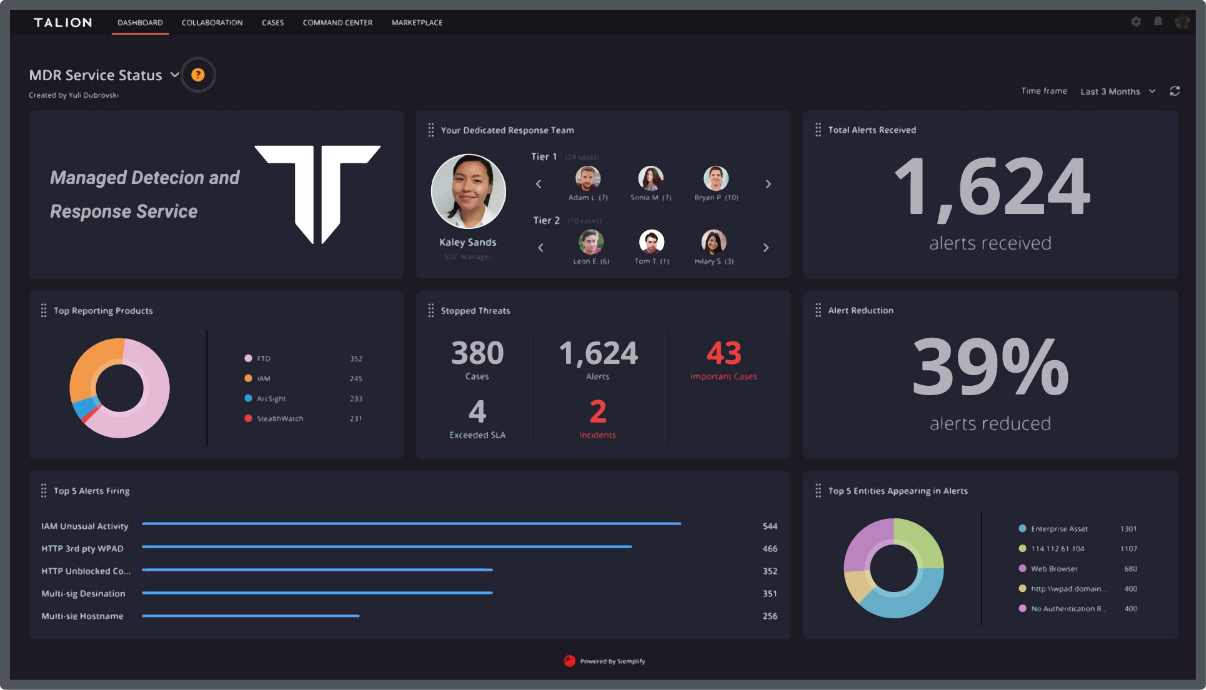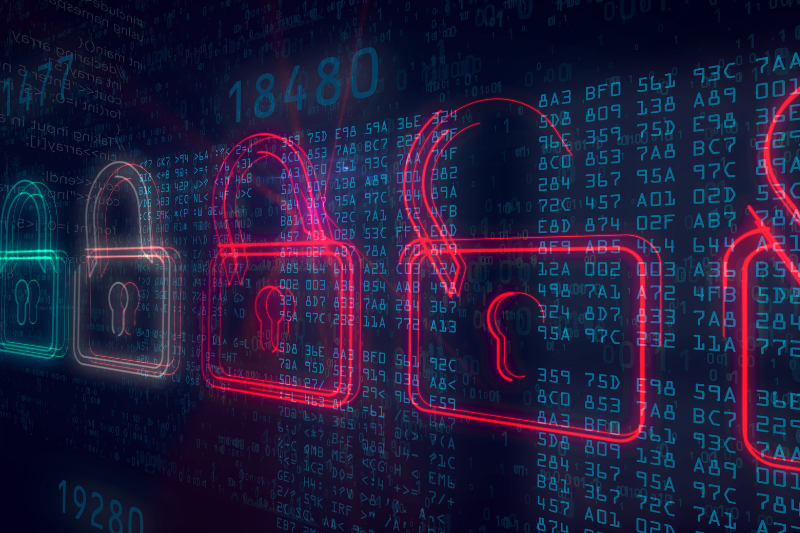As cybersecurity leaders, we are acutely aware that the threat landscape is constantly evolving. The past year has been no exception, with over 50% of organizations experiencing an increase in cyber attacks. This surge highlights the pressing need for advanced strategies to safeguard our data and maintain robust defenses. In this post, we’ll delve into some critical statistics and outline key actions your organization can take to mitigate these growing risks.
The Escalating Threat Landscape
Over 50% Increase in Cyber Attacks
Recent data indicates that more than half of all organizations have reported a significant uptick in cyber attacks over the past year. This surge is driven by increasingly sophisticated threat actors leveraging advanced tactics to breach defenses.
Key Actions:
- Enhance Threat Intelligence: Invest in comprehensive threat intelligence solutions that provide real-time insights into emerging threats. Utilize platforms that aggregate data from multiple sources to stay ahead of potential attacks.
- Implement Zero Trust Architecture: Adopt a Zero Trust approach to security, ensuring that every access request is thoroughly vetted, regardless of whether it originates from inside or outside the network.
- Conduct Regular Penetration Testing: Regularly perform penetration tests to identify and remediate vulnerabilities before attackers can exploit them. Incorporate both automated and manual testing methods for thorough coverage.
Insider Threats: A Growing Concern
34% of Data Breaches Involve Internal Actors
Insider threats, whether malicious or accidental, remain a significant challenge. A substantial proportion of data breaches are attributed to internal actors, emphasizing the need for robust internal security measures.
Key Actions:
- Strengthen Access Controls: Implement stringent access control policies to ensure that employees only have access to the information necessary for their roles. Utilize role-based access control (RBAC) and enforce the principle of least privilege.
- Enhance User Monitoring: Deploy advanced user and entity behavior analytics (UEBA) to monitor user activities and detect anomalies that may indicate insider threats. Use machine learning algorithms to identify patterns and flag suspicious behavior.
- Conduct Regular Security Training: Provide ongoing, targeted security training to employees, emphasizing the importance of recognizing and reporting suspicious activities. Tailor training programs to different roles within the organization.
The Ransomware Epidemic
Ransomware Attacks Have Increased by 62%
Ransomware remains one of the most pervasive and damaging types of cyber attacks. The frequency and sophistication of these attacks have surged, with significant financial and operational impacts on affected organizations.
Key Actions:
- Implement Advanced Backup Solutions: Ensure that you have robust, immutable backup solutions in place. Regularly test backups to confirm their integrity and speed of recovery.
- Deploy Endpoint Detection and Response (EDR): Utilize EDR solutions to detect and respond to ransomware attacks at the earliest stages. Incorporate behavioral analysis to identify and block malicious activities.
- Strengthen Email Security: Since many ransomware attacks originate through phishing emails, enhance email security measures. Implement advanced spam filters, sandboxing, and multi-factor authentication (MFA) to protect against email-borne threats.
The Supply Chain Vulnerability
40% of Cyber Attacks Target the Supply Chain
Supply chain attacks have emerged as a critical threat, with attackers exploiting vulnerabilities in third-party vendors to gain access to target organizations. These attacks can be particularly challenging to detect and mitigate.
Key Actions:
- Conduct Thorough Vendor Assessments: Regularly assess the security posture of your third-party vendors. Implement stringent security requirements and ensure that vendors adhere to them.
- Implement Continuous Monitoring: Use continuous monitoring tools to keep an eye on vendor activities and detect any unusual patterns that could indicate a breach.
- Develop an Incident Response Plan: Create and regularly update an incident response plan specifically for supply chain attacks. Ensure that all relevant stakeholders are aware of their roles and responsibilities in the event of an incident.
Cloud Security: Addressing New Risks
5: 93% of Cloud Deployments Have Exposed Vulnerabilities
With the rapid adoption of cloud services, many organizations face significant security challenges. Nearly all cloud deployments have been found to have exposed vulnerabilities, making cloud security a top priority.
Key Actions:
- Implement Cloud Security Posture Management (CSPM): Utilize CSPM tools to continuously monitor cloud environments for misconfigurations and compliance issues. Ensure that security policies are consistently enforced across all cloud assets.
- Adopt a Multi-Layered Security Approach: Integrate security measures at multiple layers, including network, application, and data levels. Employ encryption, identity and access management (IAM), and secure coding practices.
- Regularly Audit Cloud Configurations: Conduct frequent audits of your cloud configurations to identify and address any vulnerabilities. Implement automated tools to streamline the auditing process and ensure comprehensive coverage.
IoT Security: A Growing Challenge
98% of IoT Device Traffic is Unencrypted
The proliferation of Internet of Things (IoT) devices introduces new security risks, with the vast majority of IoT device traffic remaining unencrypted. This lack of encryption makes IoT devices attractive targets for cybercriminals.
Key Actions:
- Enforce Encryption for IoT Traffic: Ensure that all IoT device traffic is encrypted to prevent unauthorized access and data breaches. Use protocols such as TLS/SSL to secure communications.
- Segment IoT Networks: Isolate IoT devices from the rest of the corporate network using network segmentation. This limits the potential impact of a compromised IoT device on the broader network.
- Implement Robust Device Management: Deploy IoT device management solutions to monitor, update, and secure IoT devices throughout their lifecycle. Ensure that devices receive regular security patches and updates.
Phishing Attacks: A Persistent Threat
1 in 4 Data Breaches Involve Phishing
Phishing remains a prevalent and effective attack vector, with one in four data breaches involving phishing. Cybercriminals continue to refine their techniques, making it imperative to stay vigilant.
Key Actions:
- Enhance Email Security: Deploy advanced email security solutions that use machine learning to detect and block phishing attempts. Implement DMARC, SPF, and DKIM to authenticate emails and prevent spoofing.
- Conduct Phishing Simulations: Regularly conduct phishing simulations to train employees on how to recognize and respond to phishing attempts. Use the results to identify areas for improvement in your security awareness program.
- Implement Multi-Factor Authentication (MFA): Require MFA for all critical systems and applications to add an extra layer of protection against phishing attacks. Ensure that employees understand the importance of using MFA.
Mobile Security: Addressing the New Frontier
70% of Mobile Devices Access Sensitive Data
As mobile devices become integral to business operations, a significant percentage access sensitive data, making mobile security a crucial concern. Cyber threats targeting mobile devices are on the rise, necessitating robust security measures.
Key Actions:
- Deploy Mobile Device Management (MDM): Use MDM solutions to enforce security policies, manage device configurations, and ensure that devices are secure and compliant with corporate standards.
- Implement Secure Mobile Access: Ensure that mobile access to sensitive data is secure by using VPNs, encrypted connections, and secure access controls. Employ containerization to separate corporate data from personal data on mobile devices.
- Educate Users on Mobile Security: Provide ongoing training to employees on best practices for mobile security. Emphasize the importance of keeping devices updated, avoiding suspicious links, and reporting lost or stolen devices immediately.
Data Privacy: Navigating Regulatory Compliance
60% of Organizations Are Not Fully GDPR Compliant
Data privacy regulations like GDPR impose strict requirements on how organizations handle personal data. Despite this, a significant proportion of organizations are not fully compliant, exposing them to legal and financial risks.
Key Actions:
- Conduct Privacy Impact Assessments (PIAs): Regularly perform PIAs to identify and mitigate privacy risks associated with your data processing activities. Ensure that all data handling practices align with regulatory requirements.
- Implement Data Protection Measures: Use encryption, anonymization, and pseudonymization to protect personal data. Ensure that data protection measures are applied throughout the data lifecycle.
- Enhance Data Governance: Develop and enforce robust data governance policies that define how personal data is collected, processed, stored, and shared. Train employees on data privacy best practices and ensure ongoing compliance with regulations.
Advanced Persistent Threats: A Growing Menace
71% of Organizations Have Encountered Advanced Persistent Threats (APTs)
Advanced Persistent Threats (APTs) represent a significant and ongoing risk, with a large majority of organizations having encountered such threats. APTs involve prolonged and targeted attacks, often with the goal of stealing sensitive information or causing significant disruption.
Key Actions:
- Implement Advanced Threat Detection: Use advanced threat detection tools that leverage machine learning and behavioral analysis to identify and respond to APTs. Ensure that your security operations center (SOC) is equipped to handle complex and persistent threats.
- Enhance Network Segmentation: Implement network segmentation to limit the movement of attackers within your network. Use micro-segmentation to create smaller, more secure network zones.
- Develop an APT Response Plan: Create a comprehensive response plan specifically for APTs. Ensure that your team is trained to recognize the signs of an APT and respond effectively to mitigate the impact.
Final Thoughts
The statistics underscore the urgent need for advanced cybersecurity measures to address the escalating threat landscape. By enhancing threat intelligence, implementing Zero Trust architecture, conducting regular penetration testing, strengthening access controls, deploying EDR solutions, and securing the supply chain, organizations can significantly reduce their risk of falling victim to cyber attacks.
As cybersecurity leaders, it’s our responsibility to stay informed about the latest threats and continuously adapt our strategies to protect our organizations. By taking these proactive steps, we can fortify our defenses and safeguard our data against the growing tide of cyber threats.

